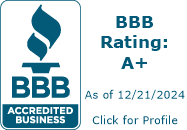Table of Contents
Do you want to increase your brand awareness? Want to attract visitors/users to your website or product? Maybe generate some sales?
Creating quality, helpful content can solve for each of these goals. Before you can do this, however, you’ll need a content marketing plan.
Content Marketing Plan
There is a huge difference between having an idea and having a plan.
“I want to create content for my website” is an idea.
“These are the pieces we’ll create over the next few months, and here is how we’ll create them,” is a plan.
So, where do you start? The first step in creating a content marketing plan should be to…
Identify Content for the Buying Funnel
Your plan should include creating content for each stage of the buying funnel.
Let’s talk about some of the different types of content for each buying stage.
Awareness
This is where you answer the question, “who the hell are you?” This is especially important when you’re just starting out. Unless you’re creating a whole new market, or you have a product that becomes instantly viral, you’re going to need A LOT of brand awareness.
That doesn’t mean big companies should ignore the Awareness stage. You need to stay top-of-mind for people. If they’re not ready to buy your product or service today, they might be in the future. The more content you put out to grow your brand awareness, the more likely those potential customers turn into real revenue.
So, what kind of content should you create to build awareness?
- Blogs
- Videos
- Infographics
- Social media posts
- Podcasts
- Ebooks and whitepapers
Engagement
If Awareness content answers the question, “who the hell are you,” Engagement content answers the question, “how good are you at what you do?” This doesn’t mean they buy-at least not yet- but it does help push readers and website visitors to that decision.
The content you create for this audience segment will show proof of your abilities; proof that your product works, proof that your services deliver above-average ROI, and/or proof that you provide high levels of customer delight.
So, what kind of content should you create to increase your engagement?
- Email newsletters
- Product comparison posts
- Case studies
- Product/service demos
- Customer testimonials
- Landing pages
- Webinars
Conversion
Now that people know who you are, and they know your abilities, products, and services, it’s time to get them to buy. The biggest mistake you can make with Conversion content is CREATING TOO MUCH OF IT.
Most of the content you create should fall into the above buckets. Provide knowledge about your company, provide knowledge about your products and services, and people will sell themselves.
So, what kind of content should you create to increase conversions?
- Sales pages
- Sales emails
So, now you have the types of content you should create, and you know where in the buying funnel they’ll have the biggest impact. Now comes the content ideation.
How the hell do you do that?
Content Ideation
So, we’ve broken down how to define your audience and what types of content help in different stages of the buying funnel. Now it’s time to come up with the content you’ll write about. Put on your trench coats: it’s time to do some detective work!
The first way we’ll find the right content is through…
Keyword Research
In order to do keyword research right, you’ll need to have some high-level topics first. For each of the above content types we identified, think of some business-related topics you’d like to write about.
We go pretty in depth in keyword research in our SEO guide for content writers.
Competitor Research
The next step in your detective work is to check out what your competitors are doing. First, you need to identify 3-5 competitors in your space to audit. Next, take the keywords you researched and find out how each of these competitors ranks for that keyword, as well as what pages show up for those keywords.
You can then turn this data into a…
Keyword Opportunity Audit
- Identify keyword opportunities by
- MoM rank + Traffic for the past year
- List of 3-5 competitors traffic by content category
Some of our favorite free keyword research tools include:
Internal Forum Questions
Many websites run a forum for fielding questions from users/customers. You can mine some of these questions to help you build short answer FAQs, instructional videos, walkthroughs, or other content.
External Forum Questions
If you don’t have a website forum, you can use public ones to mine for keywords, key phrases, and queries for your content. Some forums you can use are:
FAQ/Answer Box/People Also Ask
Whenever you see any of these SERP features, keep your eyes open for content ideas.
Query: “best free keyword research tools”
Query: “what is content”
It’s an especially good idea if one of your competitors has one of these SERP features. Study their content and see how you can provide better answers, information, data, and story for the target audience. Not only will you get one of these awesome features, but you’ll also take prime real estate from a competitor. Boom, win-win.
Now that you have strategies to gather keywords, it’s time we got down to…
Creating Content
We’ve got the foundation for some great content. Now we get to create it!
But of course, we have a couple of things to think about first. Are you going to create your content using internal writers? Or would you like to use freelancers to create your content at a quicker pace?
Well, let’s talk about how to tackle your content using each option. First, we’ll start with…
Using Internal Resources
We here at Crunchy Links write all blog posts ourselves. We want every single post to contain our expertise and our individual voices. It’s also a fantastic way to increase brand awareness. If you give each author their own byline, they become subject matter experts. As more and more of their content is read and shared, there becomes the exponential growth in their guest writing access. Their posts may also get syndicated by bigger publications, leading to brand exposure.
How do you get started? Well…
Step 1: Identify writers
- Should be multi-channel (Content, Social, Product)
- Should be multi-departmental (Engineers, Data Specialists, Front Desk Support, Sales, etc)
Step 2: Identify 1-2 Quarterly Pillar Pieces
These should be big posts. When I worked at an online customization website, released quarterly breakdowns of our most popular designs by pattern/color. This helped designers identify trends to help them appeal to customers. It was also an extremely easy piece of content to create, as the data was at our fingertips.
Step 3: Identify 1-2 Monthly Pillar Pieces
These pieces can be offshoots of your bigger pillar content, or other blog posts you ideate. At the same company, we released our favorite design customizations shared with our social media accounts. Once again, easy content to create.
Step 4: Identify Important Product/Service Releases
If you have products you’re about to release, an upgraded service tier, or other important addition to your company product line, you should make sure to have onsite content talking about it. You want a landing page, of course, but you should also have a PR announcement that you send out and put on your blog.
Step 5: Start writing
Once you have the writers and the blogs post ideas mapped out, time to start writing. You can use this content calendar we’ve created to help you schedule out your posts.
If you don’t have enough internal people to handle writing, you‘ll need a plan around…
Using External Resources
Companies use internal resources because they know the product/service, already work for the company, and don’t cost extra budget. It sometimes isn’t efficient, or the best use of internal resources, to write every piece of content. That’s where external writers come in. There are a couple of extra steps you need to take before you begin.
Step 1: Identify Monthly Budget
Since you’ll be paying freelancers, you need to establish your monthly budget. How much are you going to spend on ordering content? Are you going to edit that content once it comes back from the writer, or will you have an outside editor work on it? How many pieces will you need to order per month?
All of the above will impact your monthly budget, Make sure you take each into mind as you plan out your strategy.
Step 2: Identify Writing Platforms
There are many different platforms you can use to find writers. Some of our favorites include:
Step 3: Identify Content
Now, it’s probably not a good idea to have external writers create vital content. But, you can have them create content you need written at scale. Some examples include:
- FAQs
- Product landing pages
- Video transcripts
Step 4: Order content
Now you’re ready to hire your freelancers and get your content written.
Content Marketing
So you’ve got all your content back and published it on your site. Now what?
Now you market that $h!t!
Social Media
This should be your first spot to promote your content. If you don’t have social media accounts, set them up as soon as you can. You don’t have to use every channel, but you should choose at least two to use to promote your content and brand. We suggest starting with LinkedIn and Facebook, as they are both great for promoting content organically and with some budget behind them. We’ve put together an “Organic Social Media Beginner’s Guide” to help you kick off your marketing efforts.
Monthly Newsletter
Include new content in your newsletter. A newsletter should be about helping those who’ve signed up for it, not just taking their money. If you need more help getting started, check out our “Email Marketing Beginner’s Guide.”
Your Forum
Share “how-to” and walkthrough content with your forum, especially if you’ve seen multiple people talk about the same issue. That means even more people are experiencing it but not bringing it to your attention. Regularly posting helpful content on your forum keeps your community engaged, happy, and advocating your brand. Those same “how-to” and walkthrough pieces should be shared through social ads. The more you expose the ease-of-use of your product/service to a new audience, the more you expand your brand.
Talks/Presentations
Someone in your company should be attending local talks and presentations, as well as getting up and talking. It’s a great opportunity to share insights and new data you’ve studied. Present information from a white paper you’ve published, or some research you’ve conducted. When people in your industry trust you, others will, as well.
Syndication
This is a long term play. You need to build up a good enough reputation to have bigger publishers use some of your content on their website in exchange for a link pointing to your website, and a byline. Even if it’s a “nofollow” link, what we care about is the brand exposure.
Content Optimization
Now you have a plan for ideating and creating new content. But what do you do with all the content you already have on your website? It’s time to update and optimize that $h!t!
Identify Low-performing Content
Sometimes the pieces we create take a little bit to catch on. It could be that the ranking keyword has a lot of competition. It could be that other sites have “better” content according to the search engines. It might be that your internal linking doesn’t bing enough links to the content. No matter what, we’re going to help you identify this low-performing content so you can optimize it.
- Pull a list of all your onsite content
- You can use Screaming Frog to help generate this list
- Use this spreadsheet to collect metrics and info on your content
- Title tag
- Title tag length
- Meta description
- Meta description length
- Category (Add yourself)
- Landing pages
- Blog posts
- Product pages
- Etc.
- Ranking keyword
- Ranking keyword search volume
- Monthly page search traffic
- Bounce rate
- Average time on page
- Number of backlinks
Identify Necessary Updates
Now that you’ve filled your spreadsheet, it’s time to identify the needed updates.
On-page keywords/keyphrases
We’ve all done it: we’ve created a page with a target keyword or keyphrase that the page never ranks for. The audit you conduct will highlight new opportunities for keywords and keyphrases the page actually ranks for. Add these keywords to the on-page content
A quick note on writing for SEO – if it smells like spam, feels like spam, or looks like spam, it’s probably spam. So don’t do it. Remember, you’re writing for people. Not search engines.
Metadata
An easy way to impact your keyword ranking and click-through rate. Rewrite your title tags to include the above keywords and keyphrases you’ve found. Update your meta descriptions with the most pertinent information users need to see to entice them to click through to your page. If you have an ecommerce website, for example, use your meta description to share the features and benefits of the product. If it’s a blog post, share a pull quote to drive traffic to the page
Anchor text
Do you have any links on phrases like “click here” or “learn more?” Yeah, you’re wasting that anchor text. Make sure your anchor text is attached to high-value keywords and phrases, or else on a line that points out where the user will go when they click. For example, if you’re pointing to a Local SEO Guide blog post, create anchor text that uses the title of the piece
Internal linking structure
Some of your content may not rank because search engines, and users, can’t find it. Time to update your internal linking structure. Find all your orphan pages, and pages with only one or two links pointing to them, and find opportunities to point more pages to them. You’ve created the content: make sure it isn’t hidden from your users
Now you have a plan for writing new content and optimizing your existing content. Happy writing!
Appendix
Steps to Strategize & Calendarize New Content
- Create campaigns for crafting net new content
- New product launches
- New landing pages
- New blog posts
- New PR blasts
- New videos
- New personal stories/testimonies
- Create campaigns for optimizing current content
- Update metadata
- Update keywords
- Update internal linking structure
- Create campaigns for increasing performance of low-impact pages
- Link building
- Content syndication
- Influencer marketing
- Improve internal linking
- Create a content calendar based on the above strategies










